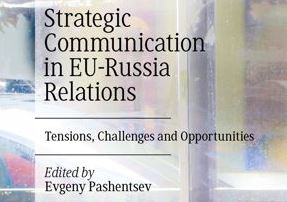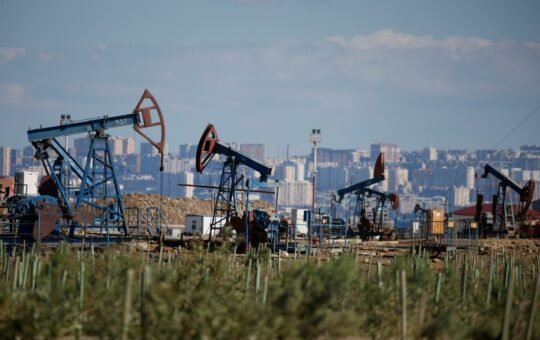(PONARS Eurasia Policy Memo) How have academics named and framed the conflict in the Donbas and what are the implications of their studies on Western policy toward Ukraine and Russia? In order to understand these subtleties, I examined English-language, academic journal articles covering the Donbas conflict and the geopolitical dynamics between Ukraine, Russia, and the West. This study included a systematic analysis of articles published between January 2014 and July 2019 in twenty-two high-ranking peer-reviewed journals covering area studies, ethnic studies, international relations, and comparative politics (see the Appendix for the list). We examined full texts and tabulated frequently used words regarding the Donbas conflict. Analysis of terminological and narrative choices helps us understand the frames employed and identify who is implied to be responsible for what. Among the findings are that the conflict is most often termed “the Ukraine crisis” or “the conflict in Donbas” even though the majority of articles point to Russia as bearing responsibility. The implications are complex and varied, with perhaps the only commonality across all articles being that deep damage has been done to both Russia-Ukraine relations and Russia-West relations, with little chance of reverting to “business as usual.”
Undercurrents and Methodology
Although the military conflict in Donbas de-escalated in the wake of the Minsk II agreement in early 2015, it continues to heavily affect the situation within Ukraine as well as the relationship between Ukraine, Russia, the European Union, and the United States. Accordingly, the origins, dynamics, and prospects of the conflict are among the most interesting questions for scholars dealing with the post-Soviet region.
While Ukrainian analysts typically blame the Russian intervention and Russians commonly prefer to portray the conflict as a domestic confrontation between the Ukrainian government and the Russian-speaking regions, English-speaking analyses are more diverse and, in many cases, more nuanced. It is reasonable to assume that authors publishing in Western scholarly journals and from leading academic think tanks are driven less by the perceived national interests of their respective states of origin than by disciplinary approaches and intellectual rigor. Their analyses influence not only the scholarly understanding of the conflict but, as they are often taken aboard by authors of political commentary and media accounts, also the views of politicians in various countries regarding the conflict and policy toward Ukraine and Russia more generally.
Prior to discussing representations of the Donbas conflict and the situation in Ukraine after 2014 more generally, it is worth mentioning some general characteristic of the body of journal articles in which these representations are expressed. The sample studied here includes all articles—original articles, research notes, introductions to special issues or sections, and review articles, but not single book reviews—that signal their relevance to the topic by way of the articles’ titles, abstracts, and/or indicated keywords. Of the total of 83 articles, 55 appeared in area studies journals, 16 in journals focusing on international relations, nine in journals dealing with ethnicity and nationalism, and three in comparative politics titles.
The chronological distribution is rather even, except for the understandable delay in response to the tumultuous events at the beginning of the revolution and conflict (with just four articles published in 2014) and an unexplained decrease of output in the middle of the period under analysis (seven texts in 2017). In terms of the authors’ affiliations, just over half of the articles are penned by scholars based in the United States (25) or the UK (18), with the remaining texts coming from Germany, Russia, Ukraine, Estonia, Sweden, Finland, Norway, and several other countries (each with five contributions or fewer).
Naming
When analyzing the terms that the authors use to define the nature of the conflict, one should keep in mind that most articles deal not only with the conflict in the Donbas but also with the larger dynamics of which it is part. These include the domestic situation in Ukraine and relations between Ukraine, Russia, and the West, beginning with the Euromaidan revolution and including the annexation of Crimea, the separatist protests in the southeastern regions and the bloody confrontation in Donetsk and Luhansk oblasts. The names can either pertain to this entire sequence of events or only to part of it, and the author’s choice can signal either an ideological position (including the reluctance to take a clear stand) or a more or less narrow focus of analysis.
While authors often use many different names for various, usually undeclared reasons (probably including purely stylistic preferences); the primary interest of my analysis is how this choice affects the framing of the described events. In particular, I am interested in portrayals of the agency of the Russian state as either actively shaping the dynamics in Ukraine or observing it from the outside, relying only on mediatory and/or humanitarian involvement.
The single most popular name used in the sample is “the Ukraine crisis,” a label employed in political and diplomatic discourse since the first days after Russia’s seizure of Crimea and originally meant to indicate a crisis of international relations no less than a crisis of the Ukrainian state. The deterioration of Russia’s relations with Ukraine and the West due to this flagrant violation of Ukraine’s territorial integrity and the international order was exacerbated by the Russia-instigated (or, at the very least, Russia-backed) separatist activities in the southeast and the bloody war in the Donbas. As a result, part of the original meaning of “the Ukraine crisis” as a crisis around and over Ukraine has been increasingly abandoned in favor of its understanding as a crisis in Ukraine. No wonder the label has been frequently used in political, journalistic, and scholarly texts together with the similar-sounding but semantically different terms “the Ukrainian crisis” and “the crisis in Ukraine.”
Of 22 texts employing the term “the Ukraine crisis,” as many as 12 also use at least one of the two other labels with no apparent distinction in the intended meaning. Another 12 texts use one or both of these other labels, again with no visible distinction between them. In virtually none of these texts do the authors provide a definition of the key terms, nor do they discuss their relation to other terms they or other authors use or why they prefer this (these) particular term(s). Only two articles problematize the term “the Ukraine crisis:” one by defining it as “a general term for addressing ‘the crisis in and around Ukraine,’ introduced by the OSCE,” and the other by calling it a euphemism for “the ongoing Russo-Ukrainian war.”
At the other end of the semantic spectrum, eight texts call the conflict “the Russo- (or Russian-) Ukrainian war” and a further eight use the less heated version “the Russia-Ukraine (or Russian-Ukrainian) conflict.” One article employs the label “the Russia-Ukraine crisis,” and two refer to “the crisis over Ukraine” with no mention of participants. Several other articles use various, more or less negatively charged terms indicating Russia’s interventionist role such as “Russia’s intervention/interference in Ukraine,” “Russia’s invasion of Ukraine,” or “Russia’s aggression against Ukraine.” As with the previous group of terms, the authors almost never explain their choice, in this case perhaps due to its perceived transparency. Only one author deems it necessary to explain that “the conflict between Ukraine and Russia is a crisis not merely for Ukraine” but also “a Russian crisis” and “an international crisis.” However, further in the text she calls it “the Ukrainian crisis,” with no explanation attached, thus inadvertently challenging her declared understanding that it is not only Ukrainian.
Coming to the regionally focused representations, the two most widespread designations of the situation in the Donbas and (south)eastern Ukraine are “the war in (the) Donbas/the Donbas war” (16 texts) and “the conflict in the Donbas/the Donbas conflict” (14 texts), neither of which clearly indicates the parties of the war or conflict. Two less frequent regionally specific terms with no clear role attribution are “the conflict in eastern Ukraine/eastern Ukraine conflict” (eight texts) and “the war in eastern Ukraine” (two texts). In several other articles, the naming implies either an active involvement of Russia (e.g. “Russia’s intervention in Donbas/eastern Ukraine,” “Russia-backed insurgency in Ukraine’s Donbas”) or, to the contrary, domestic roots of the conflict (e.g. “the Donbas insurgency,” “separatist activity in eastern Ukraine”). In many cases, Russia’s agency is not explicitly stated but rather construed through a certain framing of the situation as I explain in the next section.
Framing
The framing of the situation in the Donbas and/or Ukraine—that is, the presentation thereof as involving certain actors doing certain things—is accomplished by various means. I focus here on one principal characteristic: the narration of events as part of the introduction of a wider context for the analyzed processes. In this respect, the main difference among the articles reviewed is between those narrations that clearly indicate Russia’s active involvement and those that present the situation as an interaction between the Ukrainian authorities and the eastern regions (or the people from the eastern regions) dissatisfied with Kyiv’s policies. These framings are construed not only by the mention of certain events and omission of others, but also by the selection and naming of participants and their actions, as well as by signaling the authors’ attitude toward the narrated events/actions as true, questionable, or false.
The large majority of articles in my sample mention Russia’s intervention in Ukraine or some of its regions in particular. Only nine texts out of 83 do not seem to employ any means of portraying Russia’s active involvement. Of those that do, the construction of agency is more straightforward with regard to Crimea (texts having to do with Crimea were selected because they also deal with the Donbas). This is most likely because Russia’s involvement in Crimea has been recognized by President Vladimir Putin himself and the UN resolution provides a seemingly objective qualification of Russia’s intervention as “the annexation,” a word that implies an agent even when it does not explicitly indicate it. Still, some authors dodge this qualification by choosing designations such as “the incorporation” of Crimea into Russia or “the Crimean crisis,” while others stress their negative view of Russia’s action by speaking of its “seizure” or “invasion” of Crimea.
As for the Donbas (or “eastern Ukraine”), there is no officially prescribed qualification, so the authors choose various designations of Russia’s role from the mild “intervention” and “support for military insurgency” to the harsher “illegitimate presence” or “invasion.” As argued above, the frequent description of the situation as “the war in the Donbas” or “the conflict in the Donbas” is compatible with both the accentuation and attenuation of Russia’s involvement, so that the particular framing results not from the names but from the narrated events and the ascribed roles of participants. Perhaps most obviously, those authors who seek to stress Russia’s intervention relate the events in the Donbas to the annexation of Crimea, while those who portray the Donbas conflict as largely internal present it as a direct response to the Euromaidan protests and the overthrow of the Yanukovych regime.
Remarkably, most of those authors calling the post-2014 developments “the Ukraine crisis,” “the Ukrainian crisis,” or “the crisis in Ukraine” do recognize, often in rather harsh words, Russia’s intervention in Crimea and/or the Donbas. It thus appears that the use of these vague terms reflects not the conscious denial of Russia’s responsibility, but rather a lack of attention to how the naming affects the representation, which often results in a discrepancy between naming and framing. Perhaps the most striking example of such sloppy language is one scholar’s reference to Russia’s “violations of international law in the Ukraine crisis,” which implies that the crisis existed independently of the violation rather than being its direct consequence.
Implications and Conclusions
Considering that the articles under analysis are academic texts and not policy papers, they are primarily preoccupied with explaining various developments rather than suggesting how they may be influenced in certain directions. Accordingly, they do not pay much attention to the questions of how the conflict(s) in and around Ukraine can be stopped or mitigated or what Western states could do to facilitate that outcome. Nevertheless, the particular naming and framing of the examined developments have implications for policies of the main participating entities, namely Ukraine, Russia, and the West.
With regard to Ukrainian policies, several articles make suggestions about what the state should do to foster the loyalty of the Donbas population on both sides of the front line, thus supporting the future reintegration of the currently occupied part. At the same time, the articles focusing on Ukrainian policies are few among those analyzing the conflict in the Donbas and the broader conflict around Ukraine, and not a single text in my sample deals with Western policy toward Ukraine.
Of much greater interest to the scholars of these conflicts are Russian domestic and foreign policies and Western policy toward Russia, whether because of their greater perceived importance or lesser predictability relative to relations between the West and Ukraine. Here one can distinguish between those authors who critique the Western policy of engaging Ukraine under the Yanukovych administration for underestimating Russian fears of losing such an important country and those who argue that Russian policies in the aftermath of Euromaidan actually undermined Moscow’s interests in Ukraine and the post-Soviet region. The former authors seem to believe that the West should change its policy in favor of stronger engagement with Russia, while the latter can be seen as implying that Moscow should reconsider its course on Ukraine, in particular by diminishing its military component. However, both groups tend to argue that the damage has already been done and it is too severe to be repaired in the near future.
In sum, most of the academic texts dealing with the post-2014 situation in Ukraine recognize Russia’s active involvement, whether by the names they use or by the frames construed. At the same time, seemingly neutral terms such as “the Ukraine crisis” or “the conflict in Donbas” are often at odds with frames that feature Russian aggression.
Volodymyr Kulyk is Head Research Fellow at the Institute of Political and Ethnic Studies at the National Academy of Sciences of Ukraine.
[PDF]
Homepage image credit.

Memo #: 632
Series: 2











